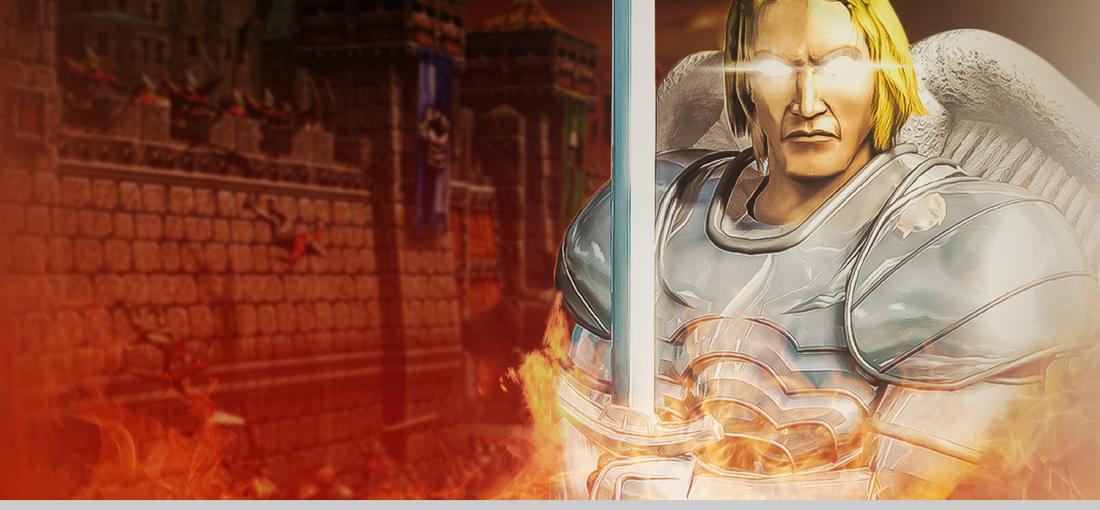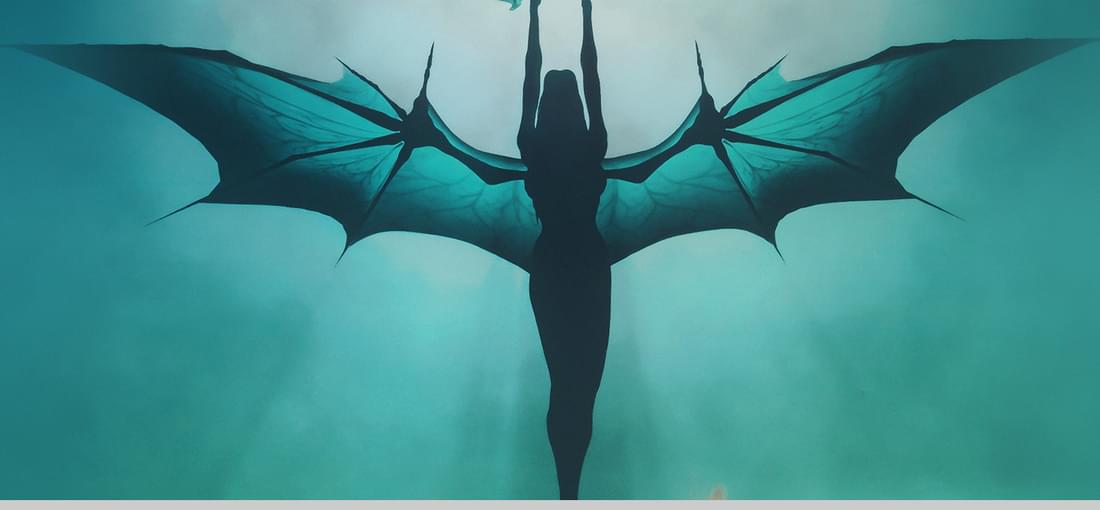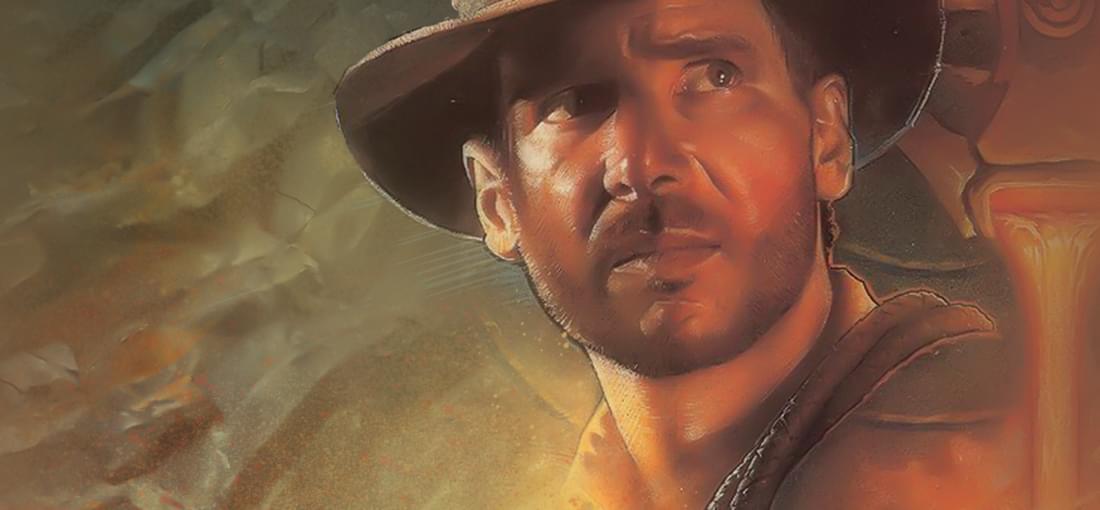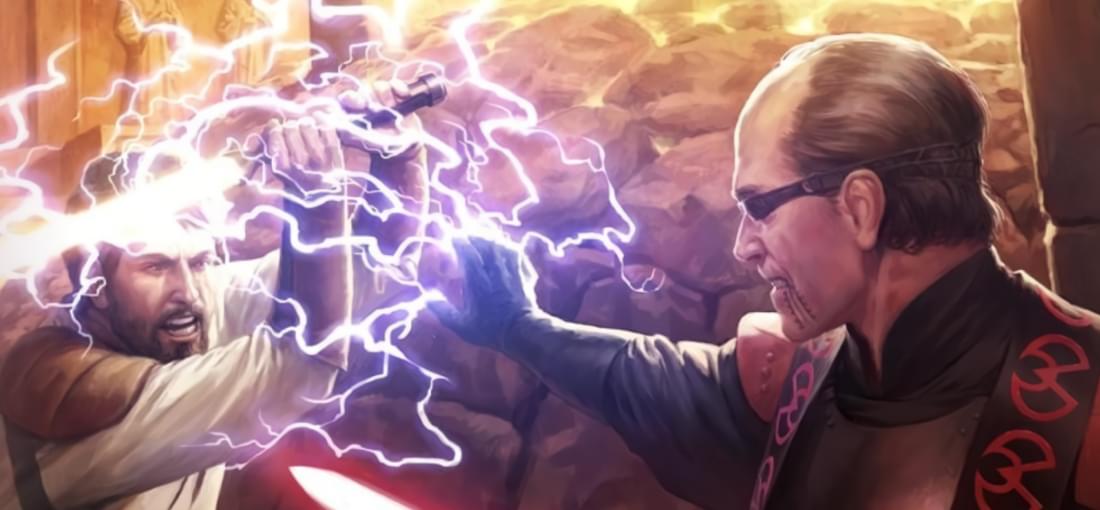


Warrior King Battles has a lot of ambitions. Despite it's heavy fantasy RPG flavour, there is a sincere effort here to replicate the challenges of medieval logistics. This is perhaps what makes it so distinctive and interesting, so it's a shame these aspects are the ones that tend to fall flat. As in any RTS, the game charges you with constructing a base and destroying your opponent. There are three distinct tech trees, the pagan, imperial and renaissance trees to keep the game asychronous. These aren't chosen from the start but rather built into over the course of the game, and they can be mixed to a limited extent which makes the game quite flexible, though I found one tends to find a strategy that suits and play consistently to that. Not content to be distinct in this way alone, Warrior King Battles makes a real try at a more medieval castle builder, with a focus on logistics. You start with a fort, complete with walls and gatehouse that can be expanded with fort buildings, and a village which serves as a drop-off point for gathered resources. To represent food consumption, your army supply limit is measured in manned farms, and going over this limit causes your military units to slowly starve. In addition, goods do not travel for use automatically; they must be shipped from your villages by cart to the city. While there are some great ideas here they completely fail in practice. It's impossible to survive a siege with one fort as there are no other sources of food, and games are decided with battles almost all the time anyway. The AI doesn't even bother to close it's gates; if you're that close, all farms are unmanned and you've already won. Pulling a sun tzu and stealing a cart of your enemies grain sounds appealing but the effort and time makes it worth far less than 10 of your own. Warrior King Battles is full of interesting ideas that never quite make it. It's no competitor to Warcraft III but still a solid and interesting RTS that's worth your time.

If you've played a lot of the Elder Scrolls games, you'll know some of the earlier ones are a bit kooky. Morrowind is remembered for it's grand vision but it had some very strange quests and characters. Daggerfall was not above quirks either, particularly NPC dialogue. Bethesda must have been at peak kookiness when they made Battlespire; it must be the strangest game in the series. You'll choose your class and use a clever point-buy system to build your character from scratch and begin doing some dungeon crawling. The first thing you'll notice is as there are almost no NPC's in the game, a lot of your dialogue is with your enemies; intimidating cowardly scamps to fight for you, trading grunts with the Vermai, trying unsuccessfully to convince the Dremora they've got you confused with someone else (which they do). You'll even fend off the 'advances' of a spider demon. The few non-demons you'll run into are mad, hopeless or baffling. Bethesda games have a bit of a reputation for being buggy but this one is particularly bad. You'll see enemies caught on the world geometry all the time, and when they cast AOEs (as they often do) they're apt to kill themselves as often as they are you. Sometimes you just die if you jump into a corner, and every death cuts the game to the DOS prompt. The controls are dreadful. The drag-to-hit system from Daggerfall is back but with mouse freelook. This makes it almost impossible to even look at your opponent when you're trying to hit them. Spell-casting has quick slots this time around thankfully, as the spellbook is counter-intuitive and slow. Yet there's something oddly endearing about this game. The dungeons are well designed, the dialogue has a lot of character, and there's a fun sense of exploration and progression. If the TES series are friends at a party, Battlespire is wearing a lamp-shade with a scary face painted on it. It might look scary, but it's charmingly oddball at it's core.

The interesting thing playing Arx Fatalis long after the ho-hum reception to it's original release is that as a game that has aged terribly, it also remains an interesting and captivating game for reasons that are difficult to state explicitly. This one was released for PC and Xbox, and it doesn't look any better now than it did back then; the textures are harsh and muddy, the models are too simple and feel deformed, and the visual effects are distracting. Gameplay is nothing to crow about either. Combat is extremely tedious; it uses a similar system to Morrowind but lacks the gear customization or in-depth player stats that made that model bearable; the pattern of hit then run backwards never changes. Ranged combat works almost the same way, and for a game set underground you unsurprisingly don't get a lot of changes to refine your marksmanship. Magic uses a 'rune' system with symbol recognition which is a nice feature but the certainty thresholds are too high and I found with some gestures 4 out of 5 were unrecognized. Not good in combat situations. So why is this game recommended? It's hard to say; the world of Arx Fatalis is certainly very cleverly designed, and the relationship between the various kingdoms and the many levels of story intrigue do keep things quite fresh. Arx is a believable place and the difficulties of underground life do come into the story; a setting I found particularly engaging. I also found the dungeon crawling very enjoyable; exploring the old cave systems, mining gems and finding artefacts amidst the varied ruins and lairs is engaging. I suppose like Ultima Underworld (from which this game takes many queues) there's a simple satisfaction in not only making sense of the winding environment but mastering it. Maybe it's the setting, or sense of exploration, or the surprisingly competent puzzles. I can't say why I liked it so much, or that anyone else will to the same extent, but for what it's worth, I found it worth the asking price.
The Dig is a rather infamous tale of development hell when the phenomenon was not so well known or understood as it is now. Spielberg's grand ideas of a sci-fi masterpiece went through a number of revisions, team changes and left a product that many feel falls short of the lineage of the rest of the company; no humour, less personality and confused mechanics. While all of these things are true, the Dig does have soul, albeit one much darker than its siblings, and is a well made adventure worth playing. Its mechanics can be thought of as a cross between typical LucasArts adventure puzzles of object manipulation and dialogue, and adventure games like Myst that focus on deducing mechanics from observation and experimentation. As The Dig takes place largely on an alien world, the game's central theme is zenoarchaeology: determining the purpose of the many pieces of alien technology you will find and how to manipulate them to your advantage. Unfortunately, the puzzles are purposefully obfuscated to feel more 'alien' so detailed experimentation is necessary. Some feel confusing and unfair, like interpreting low-resolution images on a stone, and others feel token like arranging metal plates in a pattern or opening doors with needlessly obscure keys. The game is also noted for being distinctly unfunny; it typically keeps a straight face and tells a very mature story touching on themes of survival, abandonment and delirium in the face of great danger. The characters experience loss and tragedy, and when they joke it's not to be funny but to pretend to put a brave face to an ever-darkening situation. In no LucasArts game do the characters feel more 'real' and more human than they do in the Dig. Whether or not you'll like The Dig will depend on why you play adventure games. Is it for the humor, the clever settings and the puzzles? If so it will fall short. But if a character drama about uncovering mysteries on an alien world sounds appealing, The Dig may just surprise you.

The '4th film' in the Indiana Jones franchise, The Fate of Atlantis predictably explores the mythology surrounding the lost city of Atlantis and depicts a race between Jones and the Nazis to reach it first. It is a very solid adventure and an enjoyable return for the globe trotting, iron fisted archaeologist but I find this to be one of my least favourite LucasArts adventure games. The presentation is to LucasArts quality. Graphically the game is wonderful; Jones looks like Jones and the various locales both exotic and familiar are excellently rendered, with each area visited having a very unique style and look. The voice acting however is pretty patchy, and some of the non-American characters are either difficult to understand or simply sound silly. As a LucasArts game this has the distinction of being one of the most linear adventures in the series, despite the various international trips you'll make. The plot follows a narrow progression with many instances of being in an area with only 5 or 6 rooms to explore, leading to some rather uninventive puzzles to solve that feel contrived and uninteresting in comparison to other games by the publisher. They can also get tedious and repetitive, the world stone in Monte Carlo and finding the dig site in Algeria being two of the worst offenders. The arcade fighting sequences are also pretty bad, but thankfully optional. This game does however feature far greater replayability thanks to a few dynamic puzzles and the choice of which of three paths to take about 1/3 of the way through the game. It also 'feels' like Indiana Jones, the license is very appropriately used and while linear, there is a sense of exploration and discovery that translates very well as an adventure game. Of course it's recommended but as there are a few quibbles, it would be wise to lower your expectations.

A sequel to the original Dark Forces, a game reminiscient of Doom, Jedi Knight is a clever and enjoyable adaptation of the Star Wars license for a shooting game, incorporating force powers and lightsaber combat into the original run and gun mix. Using a full 3D engine, this game feels much different to it's predecesor, but telling a more interesting and personal story from the perspective of it's protagonist and having far more interesting and intricate levels, JK:DFII is both an appropriate sequel and a very different game in it's own right. Looking at it as an FPS, JKII is reasonably competent with a good variety of weapons and opponents, some recognizable from the universe, with others being unique without feeling out of place. The lightsaber weapon is a lot of fun to use, but nodding to the game's genre you can't rely on it all the time and can be a bit tricky to use defensively. Boss fights with other force users are infrequent and reasonably enjoyable, but don't feel like an epic clash from the films. What makes the game feel distinctive is it's completely off the wall level design, due to its scale and fondness for extreme platforming. When you have learnt more advanced force powers, the game makes great use of force jumping to have you hurdle over enormous hydroelectric dams, on the edges of cliffs and caverns, over the gaps between buildings and around imperial fortifications and towers. The scale in some levels can be almost dizzying when outside. Most other force powers fit the lore of the series; and having the ability to push foes off of cliffs or mind trick stormtroopers into in-fighting adds a really enjoyable dimension to the game. All up this is a strange one. It feels very distinct from other games in it's genre, for better or worse, and it's graphics and gameplay are definitely showing their age. But it stands as a competent entry in the series, and a faithful use of the license to make a unique feeling product.

Theme Park is one of the early progenitors of commercial property management, and while a decent enough title, suffers from a number of problems that makes it a bit difficult to recommend to those that didn't play it when it was released. The game has a reasonable amount of depth, though this is customizable, so both sandbox and full sim modes are available. In the full sim mode, players place rides, stalls and amenities in their park to satisfy customers, while managing stock, employees, performing research and even trading stock in your competitors. A number of infographics with varying clarity and an 'adviser' help manage the details so getting a park into the black isn't too tricky. On the whole the game is quite fun; it's satisfying to watch your park grow, to manage satisfaction with your budget and earn a healthy profit to start with your next park. My biggest complaint is the generic nature of the parks; the tile sets aren't themed so there's no change from location to location besides resident numbers and their wealth. Customization options are also pretty limited, so I never felt like a park was really 'mine'. Once you sell them off, unless you've saved you can't visit old parks either which is a pity. There are also a few technical issues. Managing stock is the most annoying mechanics; players must manually order new stock each time the store runs out, but they are never notified when a shipment arrives, so stores can run out if you have forgotten to check stock levels. AI is a bit wonky at times as well; I frequently found cleaners running in circles having gotten stuck on their route, and little people can get lost or stuck easily too. And yet, there's a great sense of satisfaction pulling your park together, and solving the periodic problems that come up. It flows excellently and though it's hard to spend a long time playing it's a great time waster if you have a spare half hour or so. Just don't expect it to play perfectly.
As a long-time player of the Populous games, Reprisal Universe to me has been somewhat disappointing. The game has high ambitions of being a recreation of the early style of Populous gameplay, a progenitor to the modern RTS that is still thoroughly playable but almost totally absent in modern video games. But my complaint isn't so much with the game failing to adhere to this style, but more adhering to it too strictly; indeed Reprisal Universe follows the Populous formula so rigidly it's hard to recommend this over the first two as it simply offers nothing new. The game has a pleasant retro if generic graphical style, and offers a slightly more guided experience with fewer worlds but a greater sense of progression. Rather than having all god powers (lighting, fire, volcanos etc) unlocked from the start, they are collected as totems which tiers out new game elements quite nicely. All powers now have a cooldown however, which can make using them less exciting. Besides that, only one or two of the god powers are new, and flatten-sprog-conquer formula is exactly the same. For all intents and purposes this is the original game with a modern retro reskinning. It's not like there isn't room for innovation either; controlling your followers is still cumbersome and chance-based, and besides occasionally flinging fireballs there isn't that much player-player interaction. Maps still devolve into a flat expanse by mid-game. If there is multiplayer mode, I couldn't find it. I remember saying when playing Populous: The Beginning (which radically changed the formula) that simply updating the original gameplay would have made further sequels feel stale and unfortunately, without a compelling story or any real innovations to freshen the air, this game sadly feels decidedly generic. Which is a shame; it's very competently put together, and those who haven't played the originals would do as well to play this instead. It's just a pity it doesn't offer much new for the rest of us.